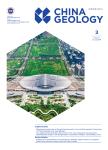Geology and mineralization of the Sanshandao supergiant gold deposit(1200 t)in the Jiaodong Peninsula,China:A review
Geology and mineralization of the Sanshandao supergiant gold deposit(1200 t) in the Jiaodong Peninsula, China: A review作者机构:Shandong Provincial No.6 Exploration Institute of Geology and Mineral ResourcesWeihai 264209China Shandong Provincial Bureau of Geology and Mineral ResourcesJinan 250013China Shandong Provincial No.3 Exploration Institute of Geology and Mineral ResourcesYantai 264003China Shandong Institute of Geological SciencesJinan 250013China Shandong Provincial Ruihai Mining Limited CompanyLaizhou 261400China Shandong Institute of Geophysical&Geochemical ExplorationJinan 250013China Hebei Key Laboratory of Strategic Critical Mineral ResourcesHebei GEO UniversityShijiazhuang 050031China School of Civil and Resource EngineeringUniversity of Science and Technology BeijingBeijing 100083China School of Resources and Environmental EngineeringShandong University of TechnologyZibo 255000China
出 版 物:《China Geology》 (中国地质(英文))
年 卷 期:2021年第4卷第4期
页 面:686-719页
学科分类:081803[工学-地质工程] 08[工学] 0818[工学-地质资源与地质工程]
主 题:Gold deposit Deep prospecting Thermal uplifting-extension mineralization Transformation of mantle properties Stepped metallogenic model Mineral exploration engineering Jiaodong-type gold deposits Sanshandao Jiaodong Peninsula China
摘 要:The Jiaodong Peninsula in Shandong Province,China is the world’s third-largest gold metallogenic area,with cumulative proven gold resources exceeding 5000 *** the past few years,breakthroughs have been made in deep prospecting at a depth of 500‒2000 m,particularly in the Sanshandao area where a huge deep gold orebody was *** on previous studies and the latest prospecting progress achieved by the project team of this study,the following results are summarized.(1)3D geological modeling results based on deep drilling core data reveal that the Sanshandao gold orefield,which was previously considered to consist of several independent deposits,is a supergiant deposit with gold resources of more than 1200 t(including 470 t under the sea area).The length of the major orebody is nearly 8 km,with a greatest depth of 2312 m below sea level and a maximum length of more than 3 km along their dip direction.(2)Thick gold orebodies in the Sanshandao gold deposit mainly occur in the specific sections of the ore-controlling fault where the fault plane changes from steeply to gently inclined,forming a stepped metallogenic model from shallow to deep *** reason for this strong structural control on mineralization forms is that when ore-forming fluids migrated along faults,the pressure of fluids greatly fluctuated in fault sections where the fault dip angle *** the solubility of gold in the ore-forming fluid is sensitive to fluid pressure,these sections along the fault plane serve as the target areas for deep prospecting.(3)Thermal uplifting-extensional structures provide thermodynamic conditions,migration pathways,and deposition spaces for gold ***,the changes in mantle properties induced the transformation of the geochemical properties of the lower crust and magmatic *** further led to the reactivation of ore-forming elements,which provided rich materials for gold mineralization.(4)It can be concluded from previous research re



